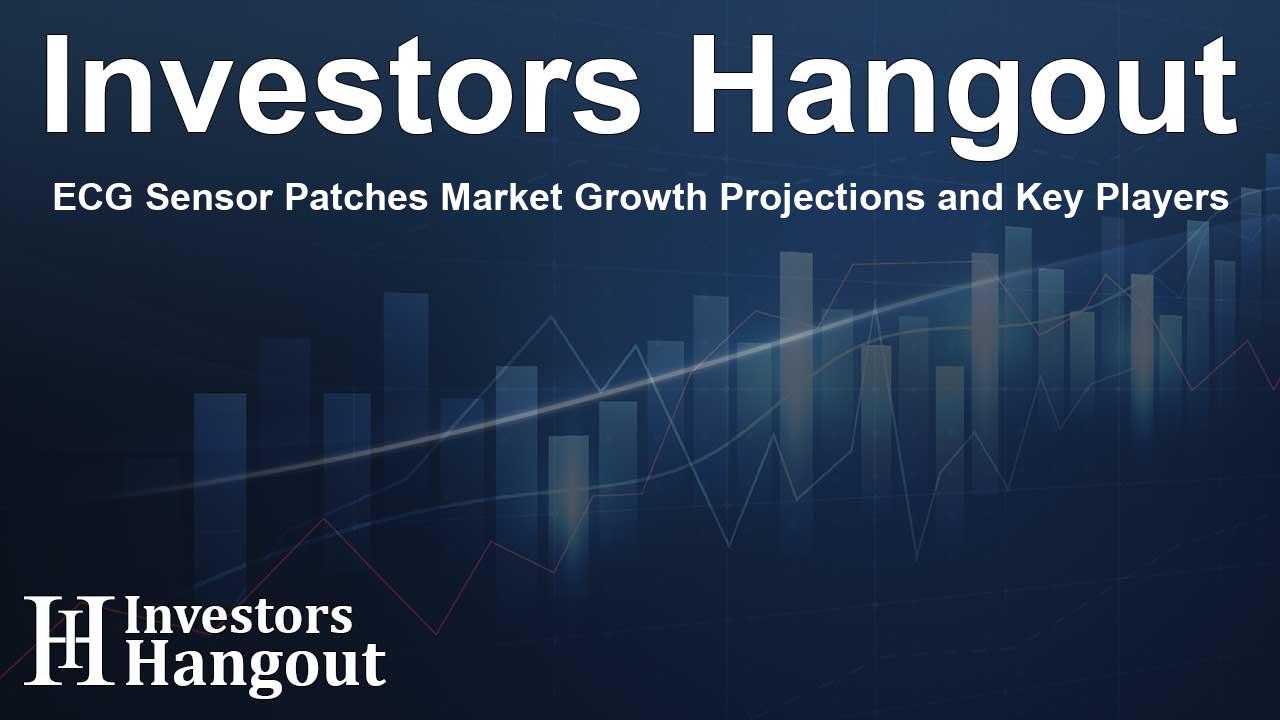ECG Sensor Patches Market Growth Projections and Key Players

ECG Sensor Patches Market Overview
The global ECG Sensor Patches Market is on track for significant growth, with a projected value of $2.32 billion by the end of the forecast period. This represents a promising compound annual growth rate (CAGR) of 12.0% from the current valuation of $0.95 billion.
Drivers of Market Growth
The market's expansion is largely driven by an increasing target patient population and a rise in cardiovascular disease (CVD) cases. Technological advancements in wireless monitoring and the rising popularity of wearable healthcare devices are enhancing cardiac monitoring capabilities. Additionally, innovation in mobile health (mHealth) applications and connected devices is likely to improve monitoring efficiency.
Emergence of mHealth and Wearable Technology
With a growing focus on mHealth applications, the demand for connected healthcare devices is skyrocketing. Wearable technology is transforming how patients manage their heart health, leading to continuous improvements in cardiac monitoring. This shift is driving industry stakeholders to form strategic partnerships and develop new products, aiming to capture a larger share of the market.
Segment Insights
In terms of lead type, the single-lead ECG Sensor Patch is currently dominating the market due to its practical utility for ambulatory cardiac rhythm tracking. Particularly effective for arrhythmia and post-operative monitoring, these patches are lightweight and unobtrusive, making them ideal for both outpatient and home use. Their ability to deliver reliable diagnostic results allows them to stand out in large-scale screening initiatives for conditions like atrial fibrillation.
Disposable ECG Sensor Patches
The disposable ECG sensor patches sector is anticipated to experience the highest growth rate during the forecast period. Concerns about infection control, especially post-pandemic, are leading to an increased preference for single-use patches. These disposable options eliminate the need for reprocessing and minimize cross-contamination risks, both in acute and outpatient settings.
Geographical Distribution of the Market
North America is leading the ECG sensor patches market, largely due to early adoption of digital cardiac monitoring techniques. The rapid commercialization of advanced ECG patches is facilitated by the US FDA’s expedited pathways for wearable cardiac monitors. Additionally, Medicare reimbursement policies are spurring the growth of remote patient monitoring programs across the region.
Clinical Adoption
Clinical research institutions and academic medical centers in North America are increasingly employing ECG sensor patches in decentralized clinical trials. This trend reinforces the demand for effective cardiac monitoring solutions across provider networks. The ease and efficiency of using these devices in various clinical settings further enhance their market position.
Leading Players in the ECG Sensor Patches Market
Key players in the market include notable companies such as Baxter International Inc., iRhythm Technologies, Koninklijke Philips N.V., and GE Healthcare Technologies Inc. These organizations play a vital role in advancing ECG technology, leveraging their innovative solutions to improve cardiac care globally.
Koninklijke Philips N.V.
As a global leader in health technology, Koninklijke Philips N.V. provides ECG sensor patches that facilitate remote cardiac monitoring and innovative diagnostics. Their Connected Care segment aims to deliver patient-centric solutions that enhance cardiac care across multiple settings.
iRhythm Technologies, Inc.
iRhythm Technologies specializes in remote cardiac monitoring through biosensing devices and AI-based analytics. Their Zio platform is instrumental in providing accurate arrhythmia detection, promoting effective outpatient management of cardiac conditions.
Conclusion
As the ECG Sensor Patches Market matures, ongoing innovations in technology and a commitment to improving patient outcomes are key drivers of growth. Stakeholders are continuously developing new solutions to meet the evolving needs of the healthcare industry.
Frequently Asked Questions
1. What is the projected value of the ECG Sensor Patches Market by 2032?
The market is projected to reach $2.32 billion by the end of the forecast period.
2. What factors are driving the growth of the ECG Sensor Patches Market?
Increasing CVD cases, technological advancements, and the rise of wearable technology are significant growth drivers.
3. Which segment of the ECG Sensor Patches Market is growing the fastest?
The disposable ECG sensor patch segment is expected to grow at the highest CAGR due to infection control concerns.
4. What geographical region leads in the ECG Sensor Patches Market?
North America currently holds the largest market share.
5. Who are the key players in the ECG Sensor Patches Market?
Notable players include Baxter International Inc., iRhythm Technologies, and Koninklijke Philips N.V.
About The Author
Contact Riley Hayes privately here. Or send an email with ATTN: Riley Hayes as the subject to contact@investorshangout.com.
About Investors Hangout
Investors Hangout is a leading online stock forum for financial discussion and learning, offering a wide range of free tools and resources. It draws in traders of all levels, who exchange market knowledge, investigate trading tactics, and keep an eye on industry developments in real time. Featuring financial articles, stock message boards, quotes, charts, company profiles, and live news updates. Through cooperative learning and a wealth of informational resources, it helps users from novices creating their first portfolios to experts honing their techniques. Join Investors Hangout today: https://investorshangout.com/
The content of this article is based on factual, publicly available information and does not represent legal, financial, or investment advice. Investors Hangout does not offer financial advice, and the author is not a licensed financial advisor. Consult a qualified advisor before making any financial or investment decisions based on this article. This article should not be considered advice to purchase, sell, or hold any securities or other investments. If any of the material provided here is inaccurate, please contact us for corrections.
